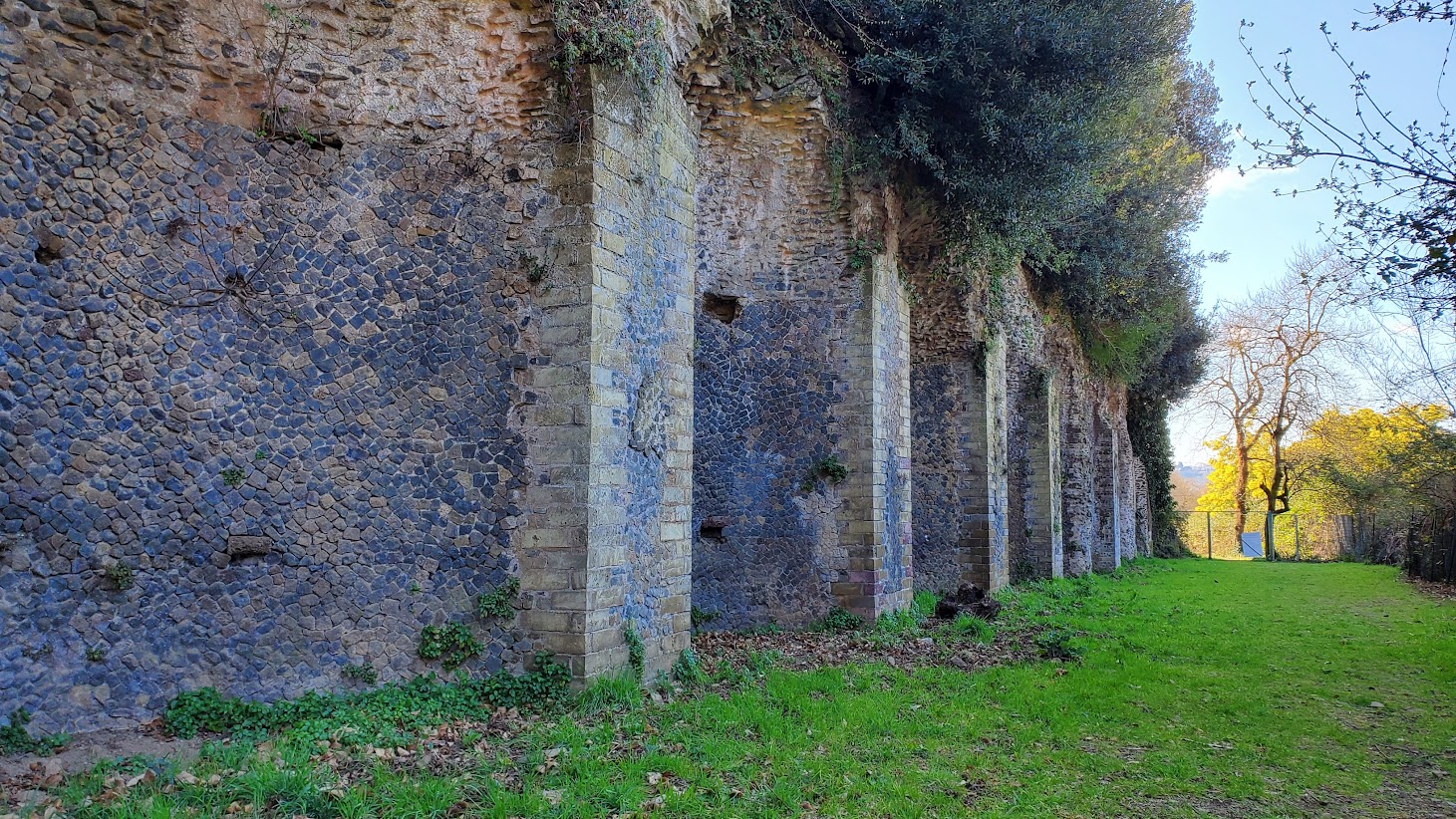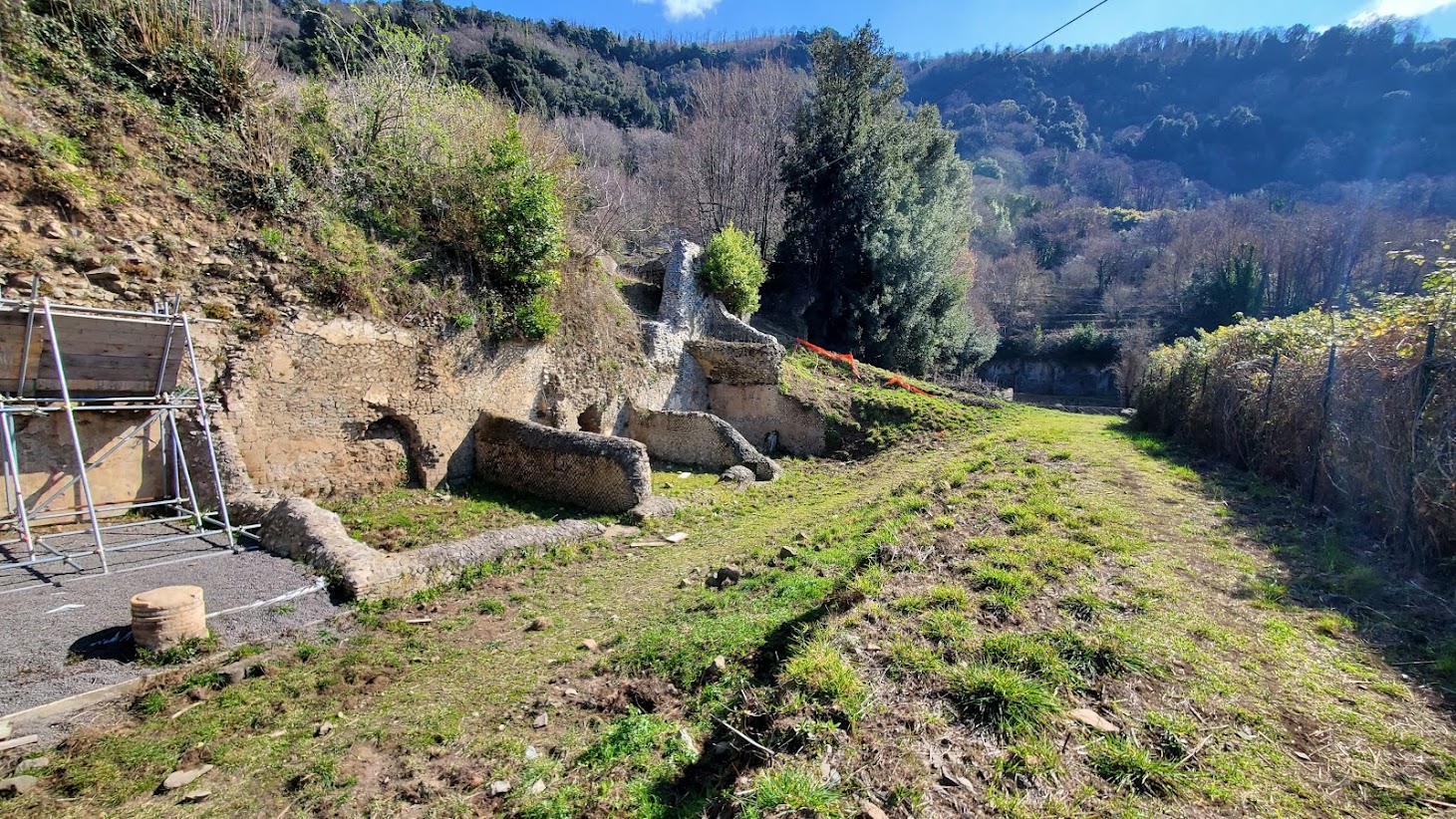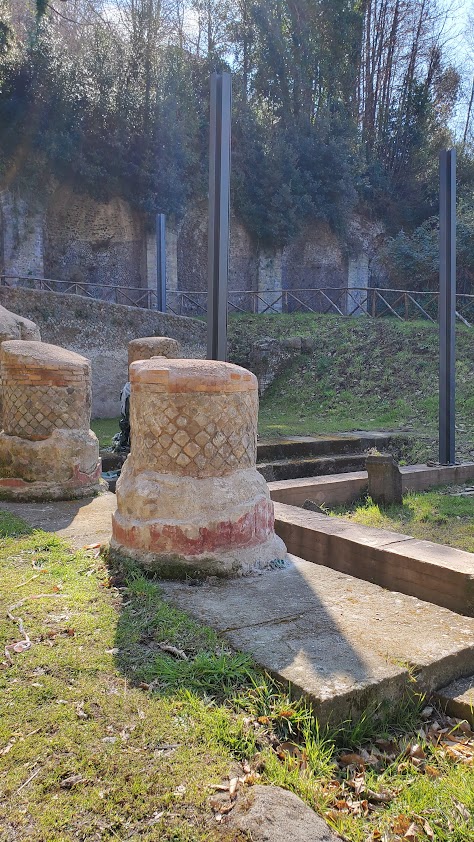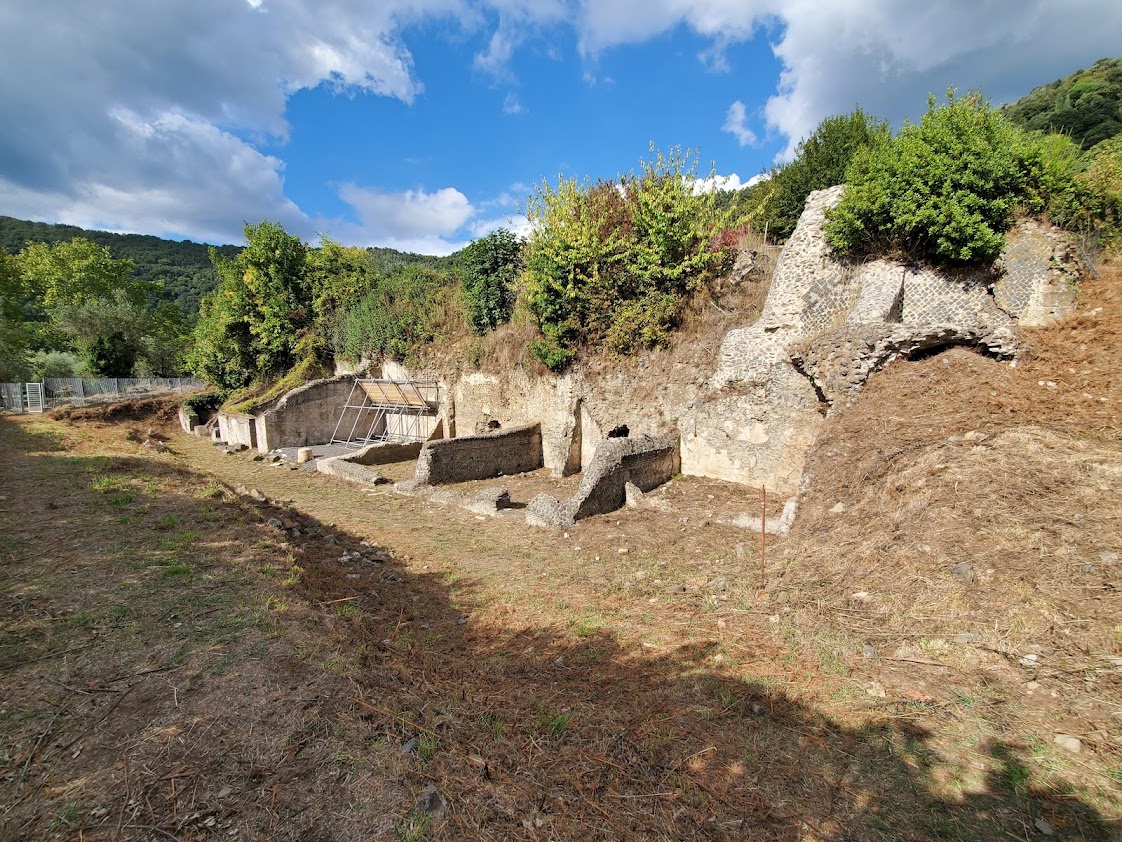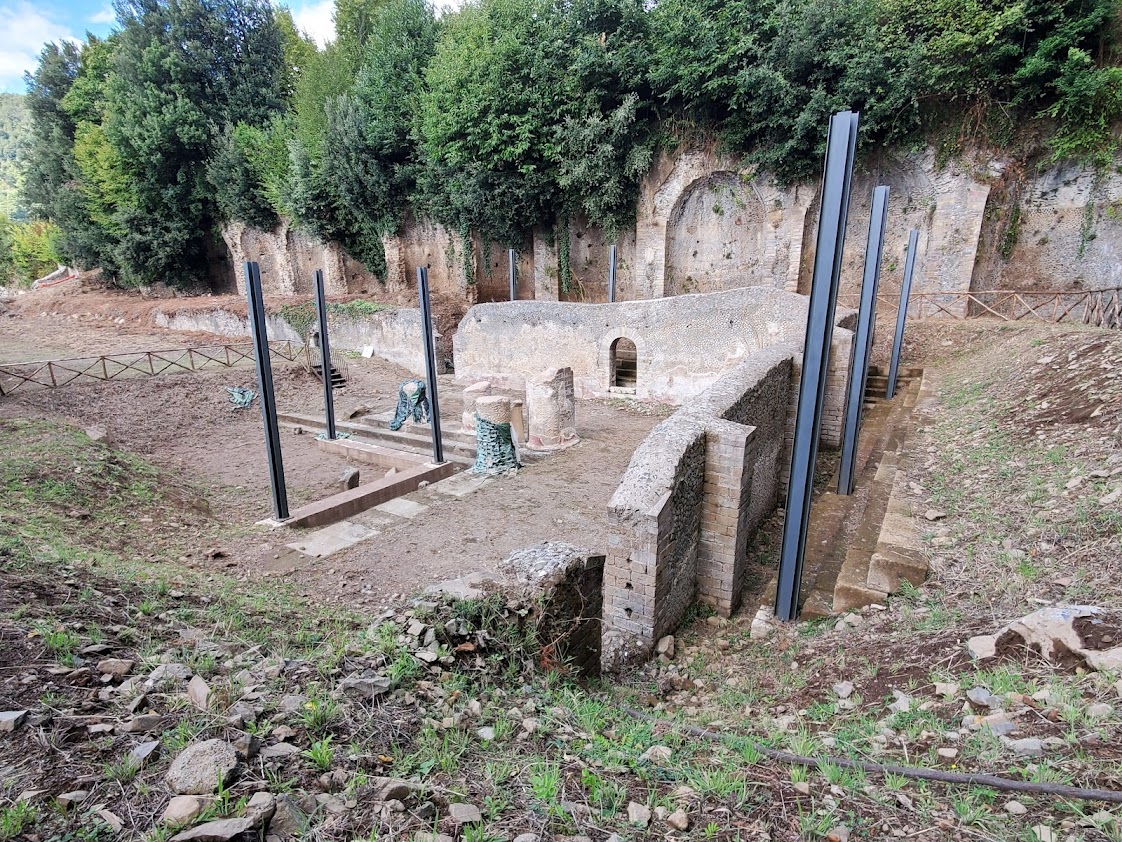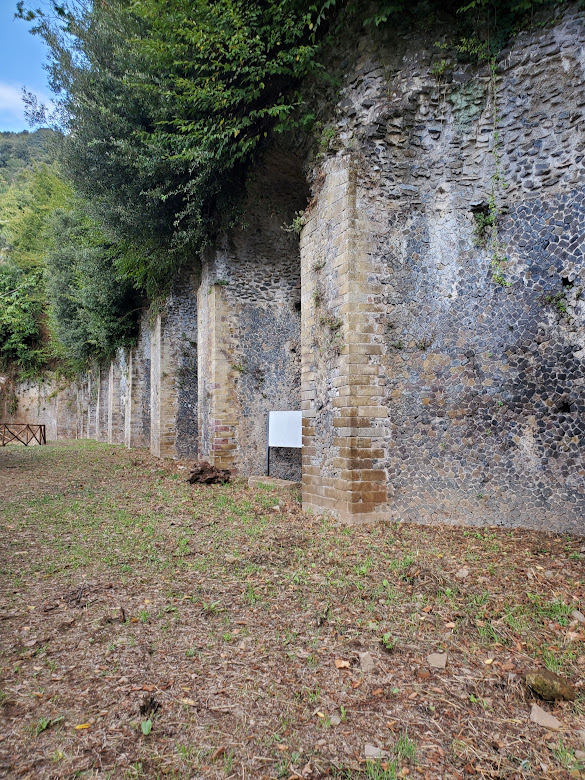
Editor’s note: Welcome to a new occasional feature here at The Wild Hunt, “Pilgrimages,” for travel writing by Pagans. To kick things off, today we are featuring TWH’s editor-in-chief, Manny Tejeda-Moreno, recounting his recent visit to the the Temple of Diana. If you are interested in sharing your own experience of Pagan pilgrimage, please send me a pitch to eric@wildhunt.org. Enjoy!
The plan had always been to visit the Temple of Diana after an admonition from my late friend Lady Circe. “She is calling you to visit,” she told me in 2016.
I tried. I should be clear, the first attempt was a spur-of-the-moment trip from the beach to Nemi. When I arrived, I found the area was fully cordoned off. The temple was closed and continues to be closed to the public.
But no matter how well the plans were laid, they would fall apart. I planned to visit in 2017; postponed by surgery. In 2018, I thought the stars had aligned; perhaps, but the clouds had not. Constant rain made a visit impossible. In 2019, I thought it would be certain except for the traffic. Yes, that’s right: unbelievably long and exceptional traffic sucked the life out of the entire day. And then came COVID.
I could always see the temple from the town of Nemi while visiting, but that last mile to the Temple of Diana seemed the furthest away. The visit had become a test of endurance.
This spring, it finally happened. After multiple calls, we had the great privilege of touring the Temple of Diana Nemorensis outside the town of Nemi, Italy, within the sacred woods of the goddess.
Dr. Sara Scarsaletta saw to the details as a special request. She is a newly minted Ph.D. (just this week, in fact) from Sapienza University of Rome, and is involved in numerous research projects in the Alban Hills. She serves as Nemi’s advisor for the interpretation of cultural and archaeological heritage.
The Temple of Diana Nemorensis was built around 300 B.C.E. There is historical evidence that worship of Diana flourished at the site at least 300 years prior and continued into late Antiquity. Votive offerings to Diana date as far back as 400 B.C.E.
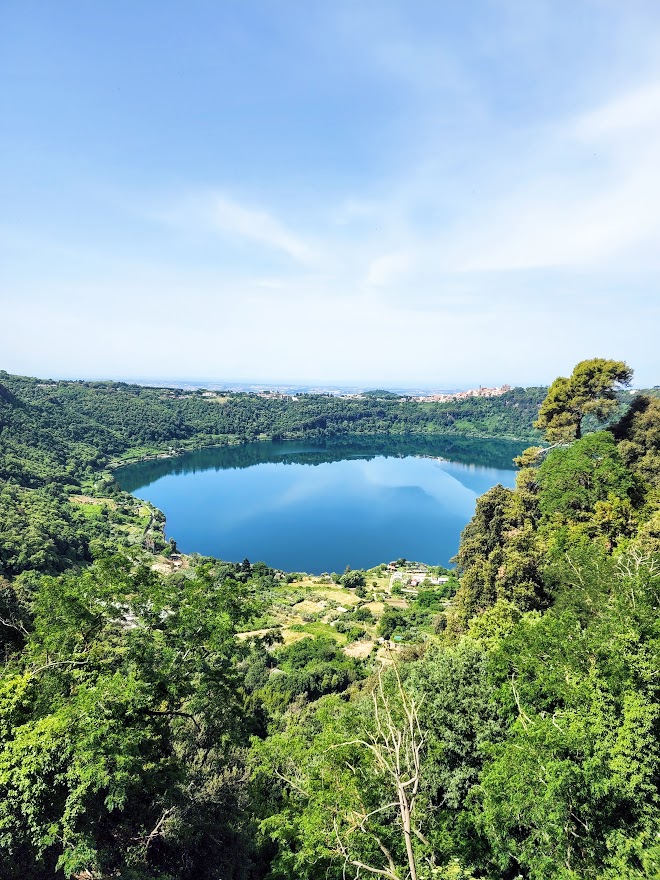
Lake Nemi and the Arrician woods [M. Tejeda-Moreno)
The temple itself was preceded by the Sacred Grove of Diana, nemus Aricinum or “Ariccian woods,” which gives the modern town its name.
The site was forcibly closed by the Christianization of the Roman Empire and the persecution of Pagans, beginning with the reign of Constantine in the fourth century C.E.
The area was famously re-introduced into modernity by Sir James Frazer in his seminal work on the anthropology of religion, The Golden Bough, though questions exist about the veracity of his interpretations of some events in the area – specifically the ritual of Rex Nemorensis. That ritual refers to the priest-kings of Diana who were runaway slaves and battled to the death in a rite of succession.
Diana is a major goddess in both Antiquity and in modern Paganism, where she is venerated by multiple faiths. She is the only Pagan goddess mentioned in the New Testament, and she remains associated with many folk beliefs, even among practitioners of Christianity.

Current size and site of the Temple [M. Tejeda-Moreno]
To arrive at the temple means going into a volcanic crater. The temple lies on the north edge of a caldera left by the quiescent Colli Albani (Alban Hills) volcano complex. The caldera itself is now Lake Nemi, also referred to as Speculum Diane, the “mirror of Diana.” There are the paver remains of an ancient Roman road that still descends into the crater.
Scarselletta greeted us in the morning to open the temple area. The temple is now about 1,000 feet (~300 meters) from the lakeshore, but the lake was likely higher in ancient times. The lake is also the site of Caligula’s famous ships that included a temple to Isis.
Scarselletta noted that the site currently encompasses 11 acres (about 45,000 square meters) but the evidence is growing that the temple complex is much larger. Continuing excavation keeps expanding the site, and the Town of Nemi is trying to purchase private lands that comprise the temple complex.
The entrance to the site is a long passage of alcoves moving toward the inner temple. There may have been wooden expansions, and there may be more yet to be discovered.
The location of the temple within the crater is an open question. The area is obviously above lake level, but there may be more to it than simply available land. Scarselletta explained that her research on Latin wells focuses on goddess associations with sacred springs. She is looking at the connection between Diana and the nymph Egeria, who is connected to Aricia and the sacred grove. She is also connected with a sacred spring at the gates of Rome, and Scarselletta is looking at evidence to determine whether a natural spring was connected to the temple site.
The temple then sweeps northwest into an olive grove. Roman mosaics were discovered in the alcoves, and they have been placed under controls to preserve and study them. The temple area then turns southward toward the lake. Even today there is a clear sense of the path a pilgrim might take to purchase votives and receive blessings. It’s clear that that area would be developed with merchants, food stalls, and accommodations for those making the 10-mile trip to the temple from Rome. Those pavers from the ancient Roman road that descends to this area are part of the road that connects directly to the Appian Way at the top of the crater.
The town of Nemi is deeply aware of its heritage and relationship to Diana. The town seal reads Dianae Nemus, the woods of Diana. A statue of Diana is in the town’s main square. It is also trying to revive the Feast of Diana, Nemoralia, as a cultural event from August 13-15 – unsurprisingly the same dates as the Feast of the Assumption of Mary or Ferragosto.

A statue of Diana wielding her bow in the town of Nemi, Italy [M. Tejeda-Moreno]
As for plans to declare the area a World Heritage Site, they are underway, but challenged by the same kinds of things projects of this kind need: time and money. The Nemi Ships alone are extraordinary, and Caligula affirmed the area as a site of pilgrimage even if his motives might have included some non-religious activity.
I had already noticed offerings laid at the lakeshore over various visits to the lake. I have found small campfires along the lake that, with some ritual forensics, show the footprints in a circle around it suggesting turns to the quarters. One tree on the way to the Temple is covered in images of Diana.

A tree strung with images of Diana outside the Temple to Diana complex in Nemi [M. Tejeda-Moreno]
I mention these to our guide, and Scarselletta then takes us to one area of the temple leaving no doubt the area is still used. Scarselletta said she had seen a woman dressed in white appear early in the mornings, and run away when seen. The temple area is locked, but adherents find ways to leave offerings as close as possible.
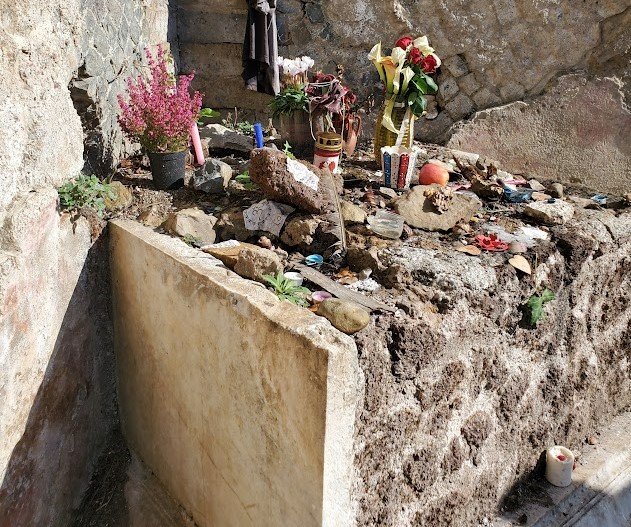
I just visited again, and new offerings are now placed along the lake, small images placed on trees of those recently departed, and the temple site awash with new ritual votives. What was a pilgrimage site remains a pilgrimage site: the land, the lake, and the temple have all kept their mysteries and their meanings and their energies.
The Wild Hunt is not responsible for links to external content.
To join a conversation on this post:
Visit our The Wild Hunt subreddit! Point your favorite browser to https://www.reddit.com/r/The_Wild_Hunt_News/, then click “JOIN”. Make sure to click the bell, too, to be notified of new articles posted to our subreddit.
